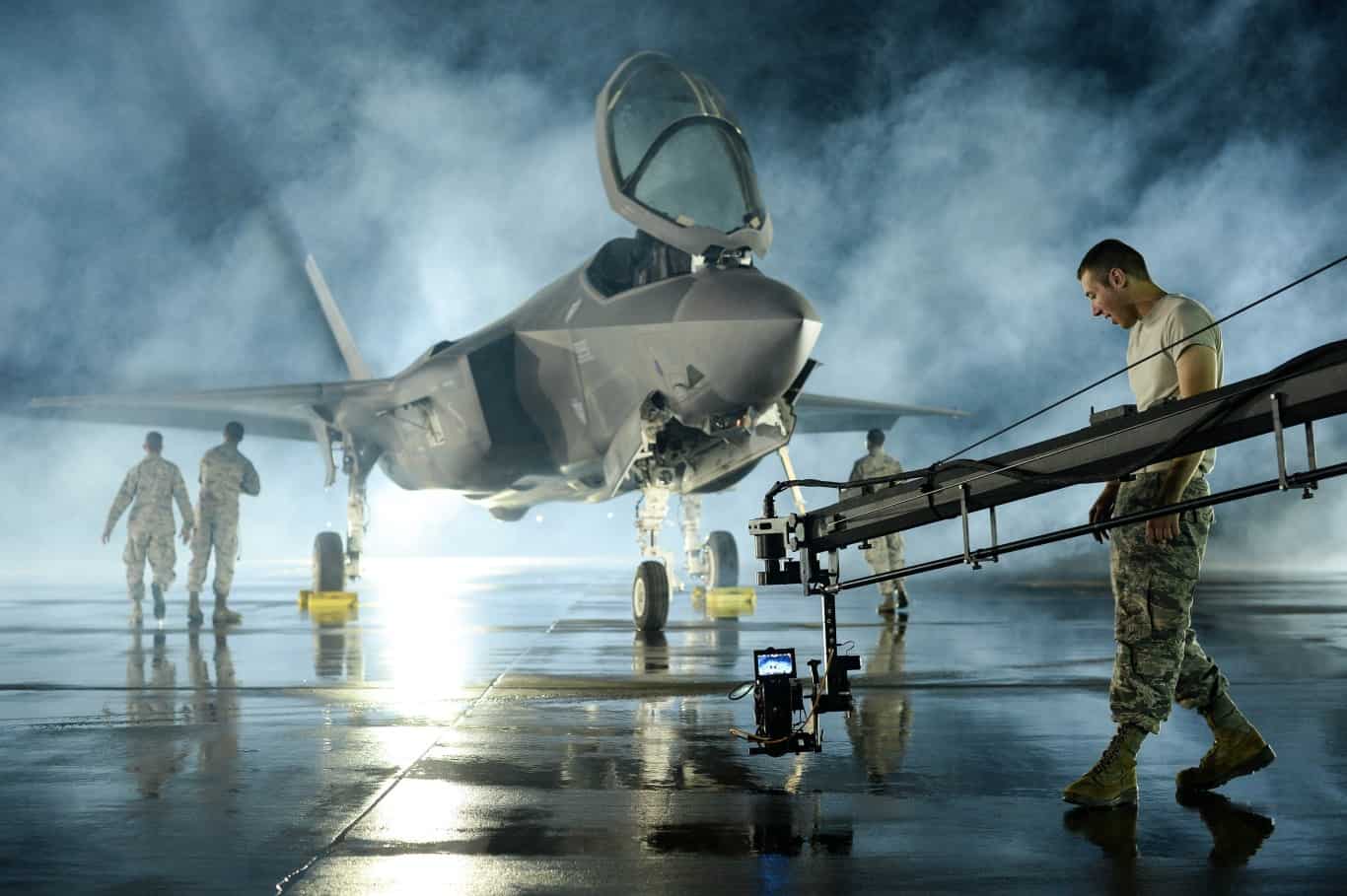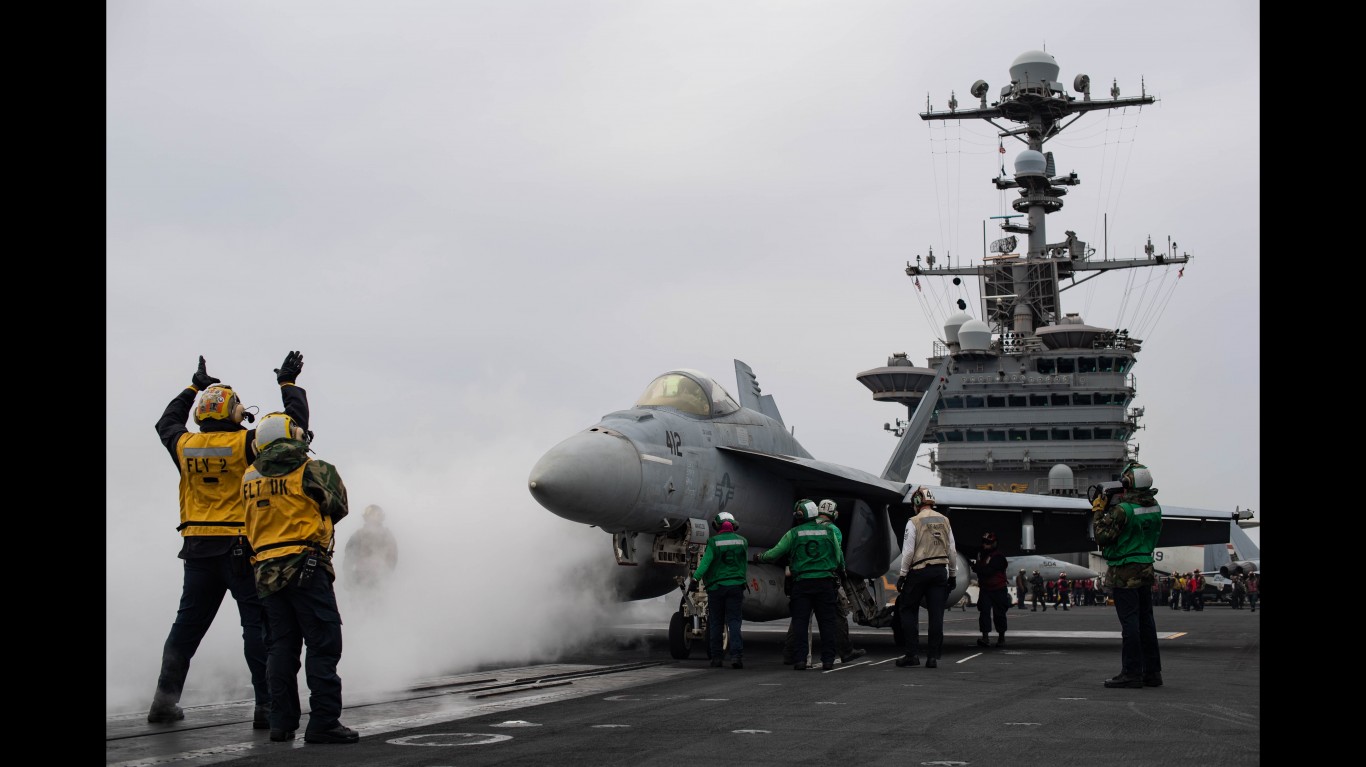
The U.S. Navy is home to one of the largest and most formidable fleets of aircraft in the world, by a long shot. Its history of using aircraft to accomplish its naval objectives dates back to World War II and the advent of the aircraft carrier. Having the capability of launching and retrieving aircraft at sea confers a major advantage, and the U.S. Navy is the best at doing it. (These brand new ships and submarines are taking over the U.S. Navy.)
Considering the U.S. Navy has 11 aircraft carriers, with more on the way, the sheer number of aircraft the Navy can launch from these ships is staggering. Some of the most widely used aircraft are the Super Hornets that have been in service since the late 1990s, while newer additions like the F-35 Lightning IIs provide a blend of stealth and firepower that greatly help the Navy in achieving any objective on the table.
While the F-35 is the newest addition, there are many other combat aircraft that have been in service of the Navy for decades. Each of these aircraft has a storied history of service. Here, 24/7 Wall St. is taking a closer look at the U.S. Navy’s fleet of combat aircraft. (The U.S. Navy’s oldest warship still in service is reaching 55 years old.)
To identify the oldest combat aircraft currently in service of the U.S. Navy, 24/7 Wall St. reviewed data from the 2024 World Air Forces report from FlightGlobal, an aviation and aerospace industry website, and ranked the aircraft chronologically. Additionally, we’ve included supplemental information on the type of aircraft, top speed, how many are in active service, as well as their armament. We excluded trainer aircraft.
Here is a look at the oldest combat aircraft in the U.S. Navy:
Why Are We Covering This?
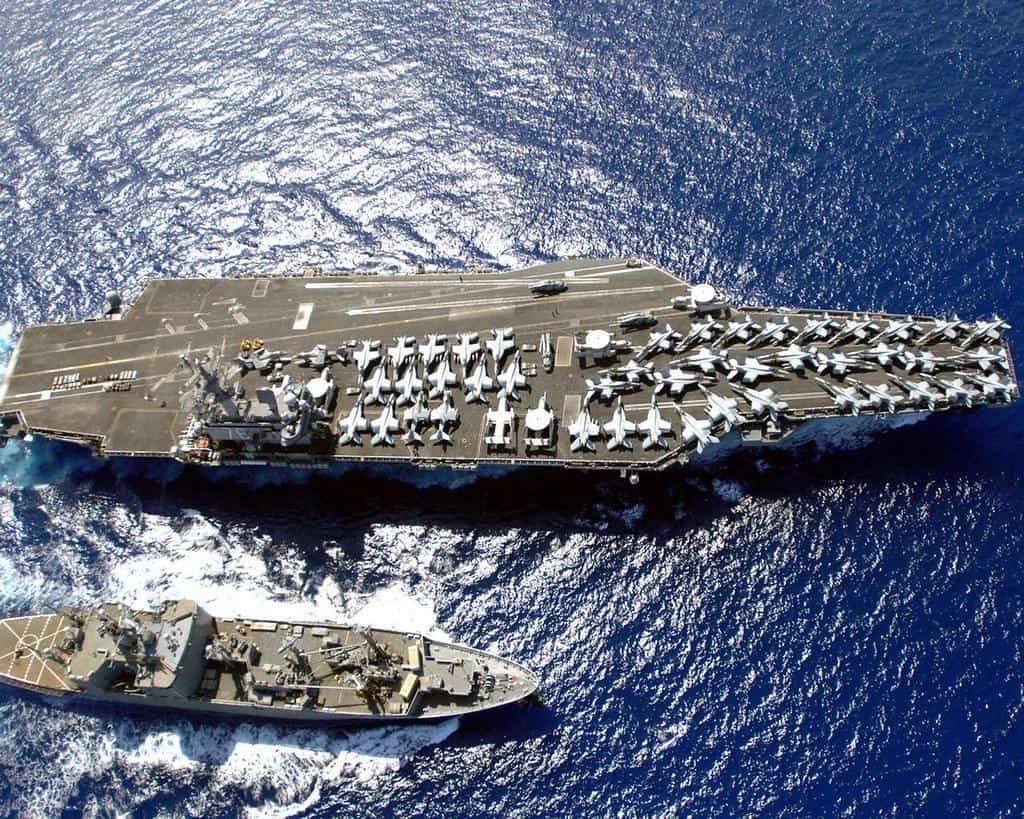
Understanding the aircraft used by the U.S. Navy provides insight into joint military capabilities and defense strategies. Also knowing what the U.S. has in its arsenal further explains its military capabilities. This further gives context to the tactical flexibility and logistical reach the Navy brings in its operations. Lastly, the composition and technological level of the aircraft fleet highlight the Navy’s ability of maintaining dominance and its rapid response capabilities, both of these are key factors in its strategic defense planning.
6. F-35C Lightning II
- Type: Multirole fifth generation strike fighter aircraft
- Year introduced: 2016
- Active aircraft: 30
- Top speed: 1,199 mph
- Armament: 25mm GAU-12/U cannon in external pod, Sidewinder missiles, Paveway guided bombs, Rockeye II bombs, Brimstone missiles, Storm Shadow missiles, drop bombs
The F-35 Lightning II is one of the newest additions to the U.S. Navy. As a fifth-generation strike fighter aircraft, the Lightning II can play a number of roles incorporating the newest stealth technology.
Introduced in 2016, the F-35A Lightning II boasts a top speed of 1,199 mph and can equip a wide variety of weapons. It is one of the newest fifth-generation aircraft to enter service. Currently, there are 234 in active service for the U.S. Air Force but hundreds more are on order from Lockheed Martin for the U.S. military at large.
5. EA-18G Growler
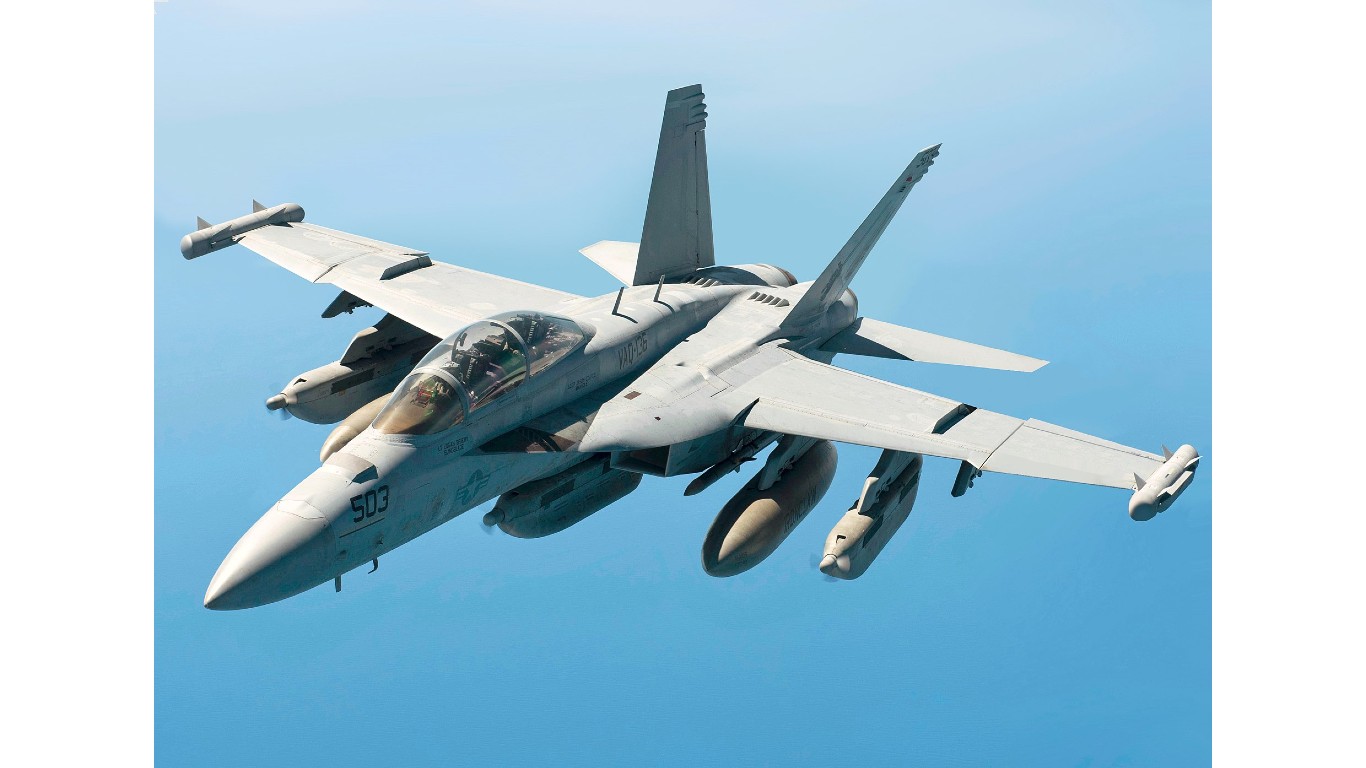
- Type: Carrier-based electronic warfare aircraft
- Year introduced: 2009
- Active aircraft: 153
- Top speed: 1,181 mph
- Armament: Detection pods, high band jamming pods, low band jamming pods, AN/ASQ-228 ATFLIR, SHARP, Harm missiles, AMRAAM missiles, Joint stand-off weapons
The EA-18G Growler is a carrier-based electronic warfare aircraft that was introduced in 2009. Currently there are just over 150 of these aircraft in service. These jets can hit a top speed of 1,181 mph and can equip a wide array of weapons.
The Growler is not only equipped for combat but also for electronic warfare, some of this includes detection and jamming pods to disrupt enemy sensors and communications. It’s worth noting that these jets are a specialized variant of the F/A-18F Super Hornet.
These jets play an important role in protecting strike aircraft by preemptively jamming enemy radar and intercepting communications, clearing the path for less stealthy fighters.
4. MV-22 Osprey
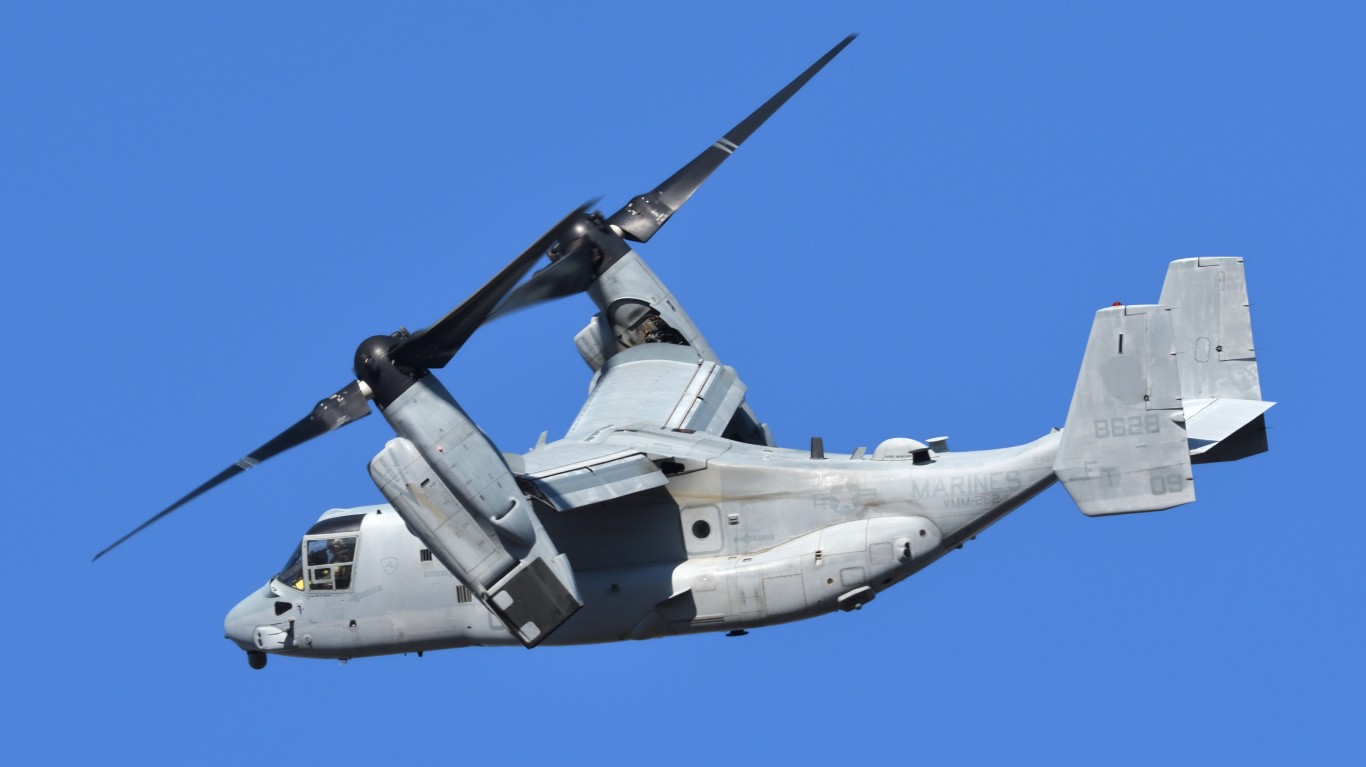
- Type: Tilt rotor VTOL aircraft
- Year introduced: 2007
- Active aircraft: 27
- Top speed: 316 mph
- Armament: 7.62mm machine guns, 12.7mm machine guns
Known for its unique ability to takeoff and land vertically like a helicopter and then adjust its rotors to operate like a turboprop plane, the MV-22 Osprey is one of the more unique aircraft in the U.S. Air Force. It is manufactured by Bell Boeing and plays key roles in U.S. special operations missions like infiltration, extraction, and resupply. The U.S. Marine Corps uses this aircraft extensively for troop deployment and extraction, or even just for logistical purposes. The Osprey also can refuel mid-flight which significantly extends its range for longer missions.
Since its introduction, the MV-22 Osprey has seen action in major operations, including Iraq, Afghanistan, and humanitarian missions worldwide, typically filling a logistical role. In terms of its cargo, the Osprey is capable of carrying up to 24 combat-loaded Marines or 20,000 pounds of internal or external cargo.
3. F/A-18 Super Hornet

- Type: Carrier-based strike fighter aircraft
- Year introduced: 1999
- Active aircraft: 421
- Top speed: 1,187 mph
- Armament: 20mm M61A1 Vulcan automatic cannon, Sidewinder missiles, AMRAAM missiles, Harpoon missiles, HARM missiles, Maverick missiles, joint direct att munitions, Rockeye II bombs, general purpose bombs
The F/A-18 Super Hornet was introduced in 1999 as a carrier-based strike fighter aircraft. There are currently over 400 of these aircraft in service of the U.S. Navy.
These jets are capable of reaching speeds up to 1,187 mph and are typically armed with a 20mm M61A1 Vulcan cannon and a variety of missiles and bombs, including Sidewinders, AMRAAMs, Harpoons, HARMs, Mavericks, as well as precision joint direct attack munitions and conventional bombs.
The Super Hornet is designed with a larger airframe, more advanced radar systems, and greater fuel capacity than its predecessor, the original F/A-18 Hornet. These upgrades significantly improve the Super Hornet’s range and endurance.
2. MH-53E Pave Low
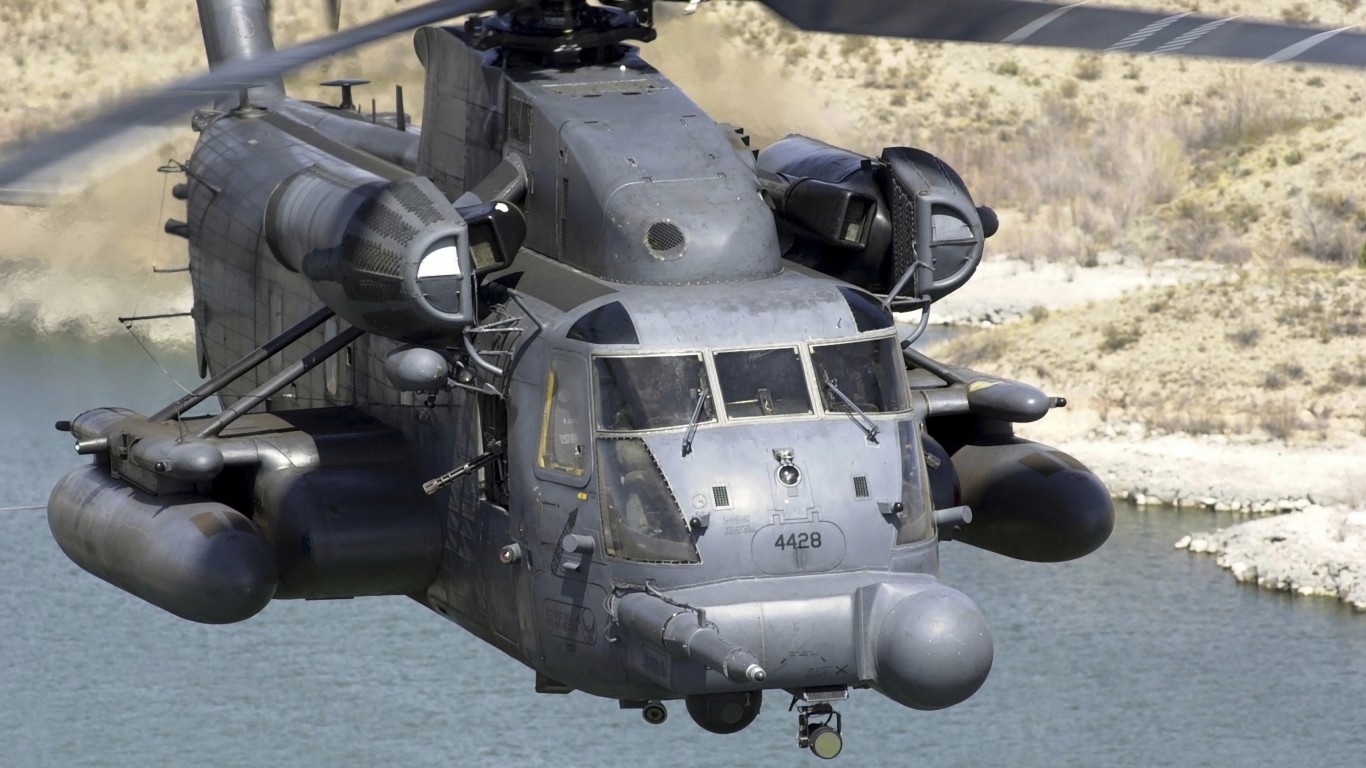
- Type: Multirole transport helicopter
- Year introduced: 1981
- Active aircraft: 26
- Top speed: 196 mph
- Armament: 7.62mm M134 miniguns, 12.7mm Browning M2 heavy machine guns
The MH-53E Pave Low, introduced in 1981, is a multi-role transport helicopter with 26 active aircraft in service. It can hit a top speed of 196 mph and is heavily armed with 7.62mm M134 miniguns and 12.7mm Browning M2 heavy machine guns. This helicopter is used for long-range insertion and extraction missions.
1. S-70 Black Hawk
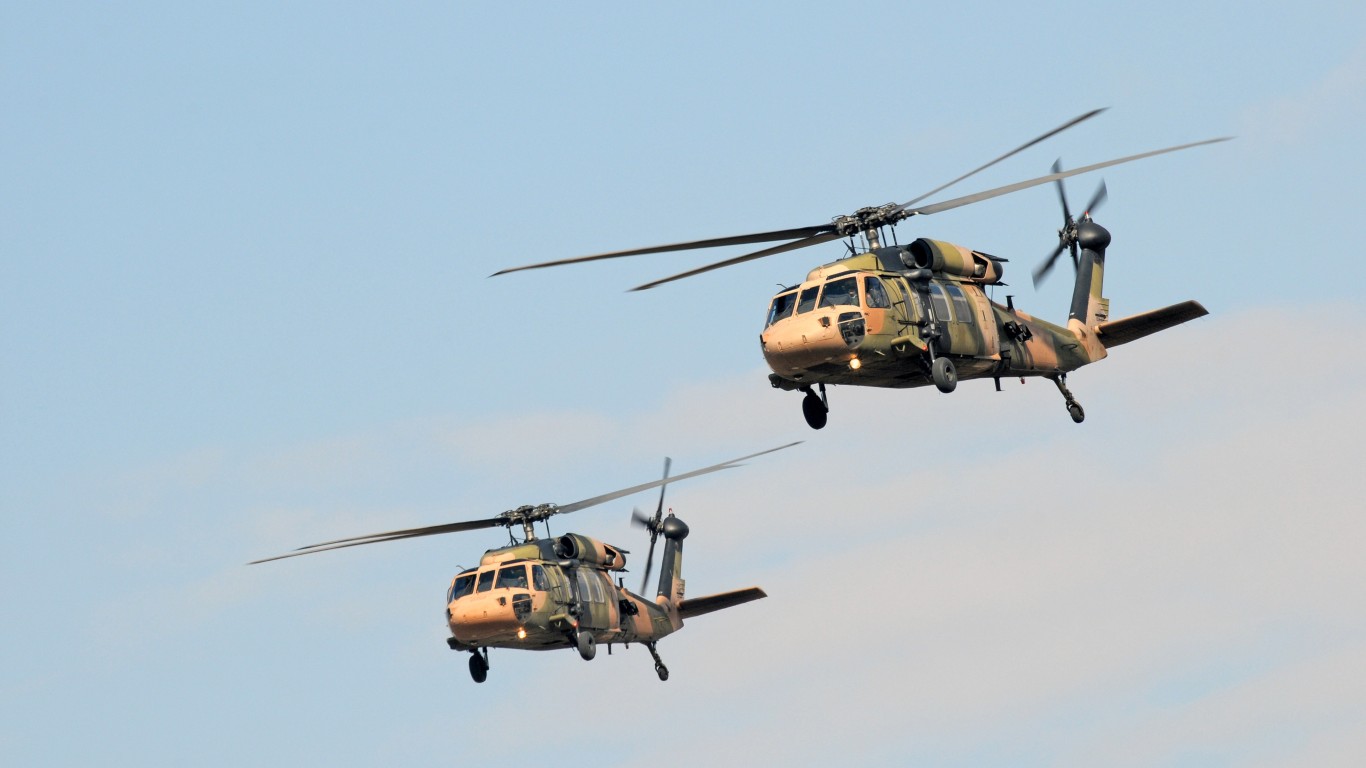
- Type: Medium-lift multi-mission helicopter
- Year introduced: 1979
- Active aircraft: 454
- Top speed: 183 mph
- Armament: 7.62mm machine guns, Hellfire missiles, 12.7mm gatling guns, M134 gatling guns, rocket pods, 30mm chain gun
The Black Hawk helicopter is by far one of the most iconic helicopters ever built. It is the workhorse of the U.S. military with over a few thousand units currently in service across all branches.
It features twin turboshaft engines, a single four-bladed main rotor, and a four-bladed tail rotor, which allow for top speeds over 180 mph. Typically, this helicopter carries a crew of two pilots and two crew chiefs and can transport up to 11 fully equipped soldiers. In total, the Black Hawk can carry a payload of roughly 9,000 pounds.
Black Hawk helicopters have played important roles in conflicts around the globe. One infamous instance was the conflict in Somalia in 1993, particularly the Battle of Mogadishu. The Black Hawk played a significant role in urban combat and casualty evacuation under intense fire. This story would go on to make it as a blockbuster movie famously titled “Black Hawk Down.”
Take Charge of Your Retirement In Just A Few Minutes (Sponsor)
Retirement planning doesn’t have to feel overwhelming. The key is finding expert guidance—and SmartAsset’s simple quiz makes it easier than ever for you to connect with a vetted financial advisor.
Here’s how it works:
- Answer a Few Simple Questions. Tell us a bit about your goals and preferences—it only takes a few minutes!
- Get Matched with Vetted Advisors Our smart tool matches you with up to three pre-screened, vetted advisors who serve your area and are held to a fiduciary standard to act in your best interests. Click here to begin
- Choose Your Fit Review their profiles, schedule an introductory call (or meet in person), and select the advisor who feel is right for you.
Why wait? Start building the retirement you’ve always dreamed of. Click here to get started today!
Thank you for reading! Have some feedback for us?
Contact the 24/7 Wall St. editorial team.
